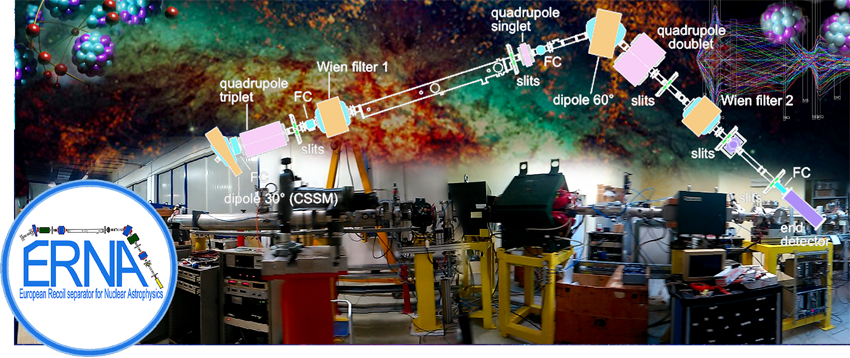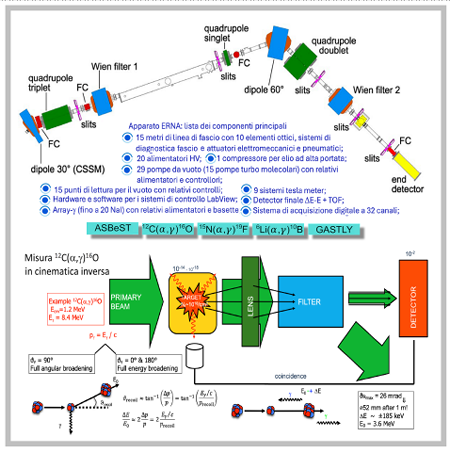
ERNA2, astrophysical nuclear reactions reproduced in laboratory.
Nuclear Astrophysics studies the nuclear processes occuring in space and characterize (or have characterized) the energy production and nucleosynthesis of the Big Bang, stars and violent events such as the fusion of neutron stars and supernova explosions.
Reproducing the conditions in which these reactions occur in nature and measuring them in the laboratory is the mission of the ERNA2 experiment. The main difficulty in studying the nuclear physics of stars in laboratory lies in the low energy at which astrophysical events occur: primordial nucleosynthesis becomes efficient when kT<100 keV, while fusion reactions in stars occur at energies of a few tens of keV. ERNA2 makes use of inverse kinematics coupled to the powerful fragment separator installed at the CIRCE laboratory in Caserta for the study of radiative capture nuclear reactions.
The current and upcoming scientific program is focused on the measurement of the cross sections of the reactions 12C(α,γ)O16 , 15N(α,γ)F19 , 6Li(α,γ)10B, important for astrophysics.

The reactions, for example 12C(α,γ)O16, , are studied by accelerating a beam of 12C on a highly pressurized and windowless gaseous target of 4He , localized in a very small region of space. The 16O produced in the reaction, conveyed into the recoil separator, is separated from the primary beam, several orders of magnitude more intense, and is detected by a multi-stage detector allowing particle identification and located at the end of the beam line. Furthermore, an array of scintillation detectors is placed around the gas target, allowing the measurement of the gamma ray produced in the reactions.
ERNA2 is a collaboration of about 20 people, coming from different Italian and foreign institutions. Bachelor, master and PhD theses are available in ERNA2, with experimental and data analysis activity foreseen.













































































































